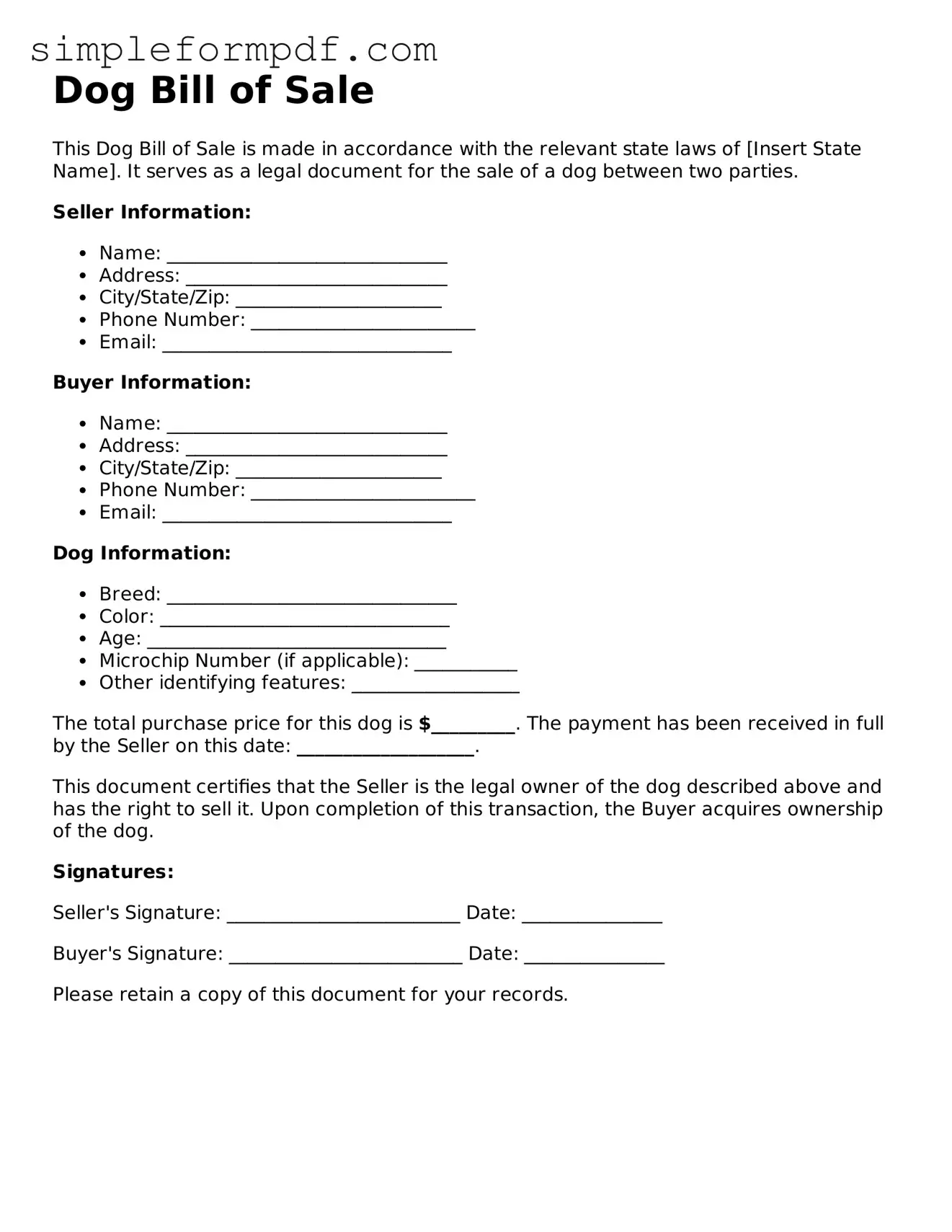Dog Bill of Sale
This Dog Bill of Sale is made in accordance with the relevant state laws of [Insert State Name]. It serves as a legal document for the sale of a dog between two parties.
Seller Information:
- Name: ______________________________
- Address: ____________________________
- City/State/Zip: ______________________
- Phone Number: ________________________
- Email: _______________________________
Buyer Information:
- Name: ______________________________
- Address: ____________________________
- City/State/Zip: ______________________
- Phone Number: ________________________
- Email: _______________________________
Dog Information:
- Breed: _______________________________
- Color: _______________________________
- Age: ________________________________
- Microchip Number (if applicable): ___________
- Other identifying features: __________________
The total purchase price for this dog is $_________. The payment has been received in full by the Seller on this date: ___________________.
This document certifies that the Seller is the legal owner of the dog described above and has the right to sell it. Upon completion of this transaction, the Buyer acquires ownership of the dog.
Signatures:
Seller's Signature: _________________________ Date: _______________
Buyer's Signature: _________________________ Date: _______________
Please retain a copy of this document for your records.
